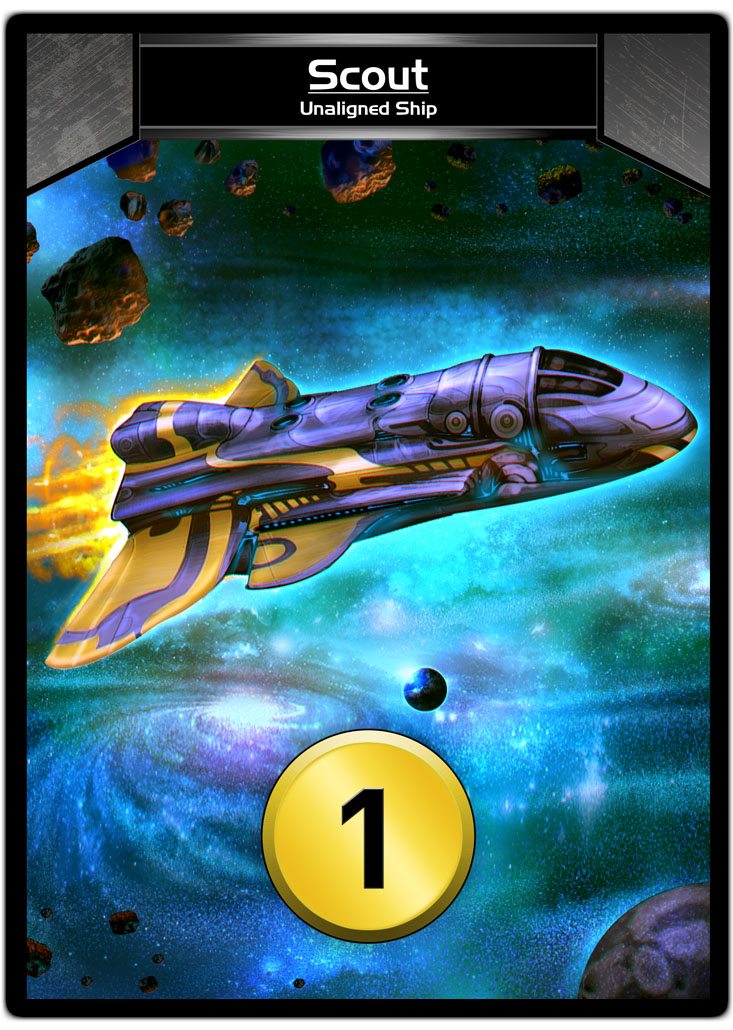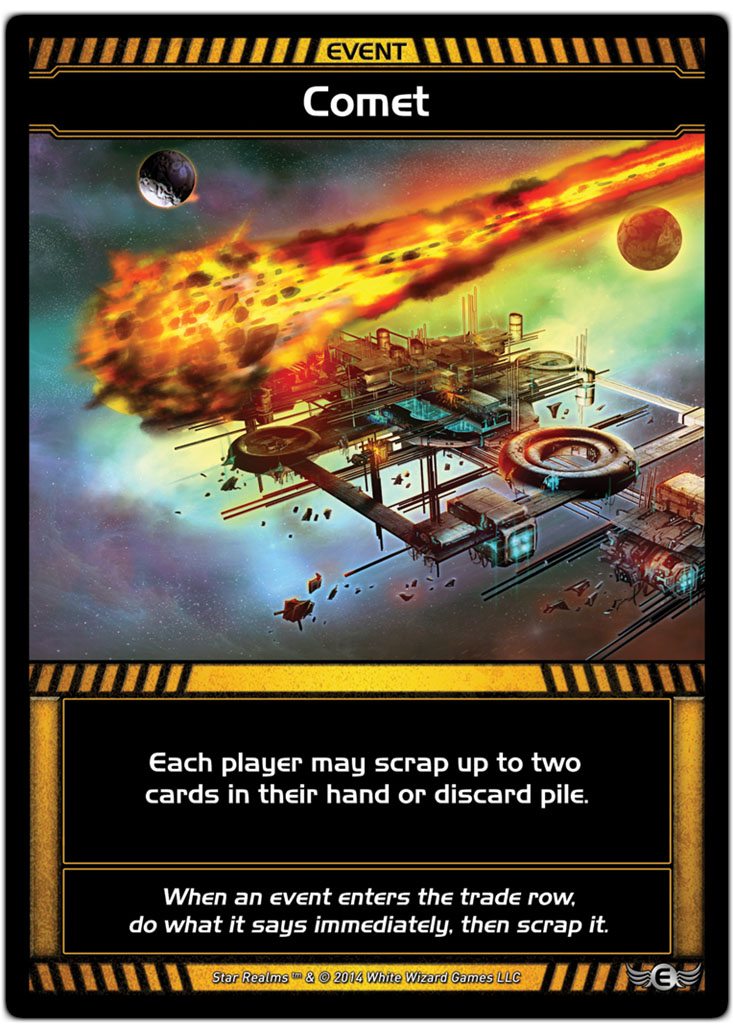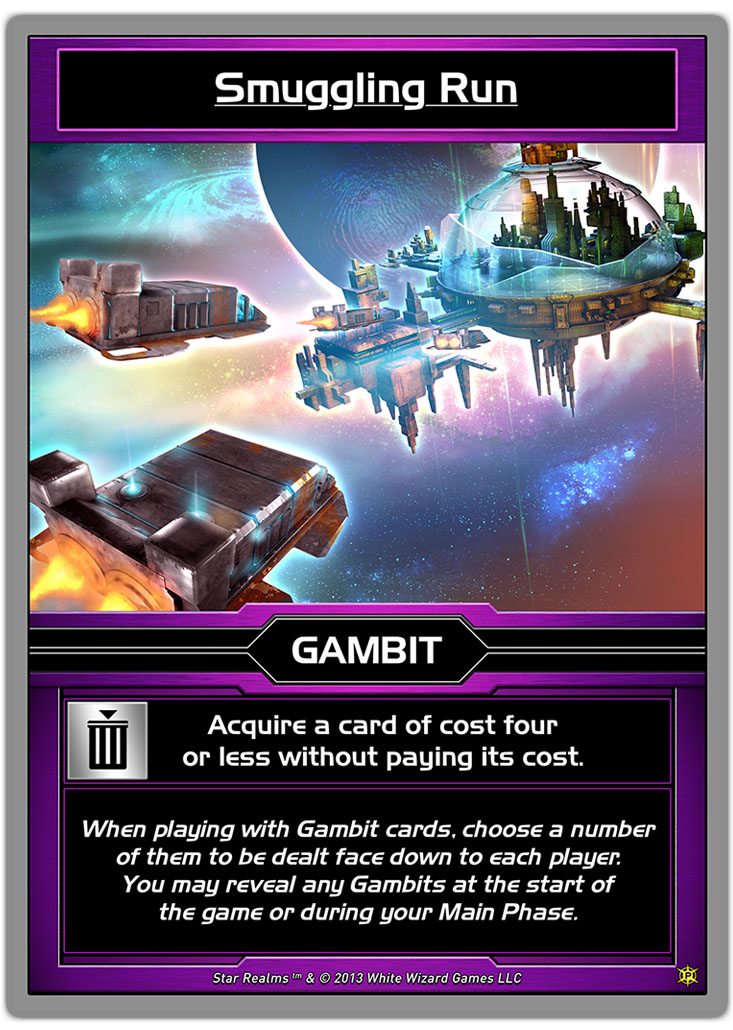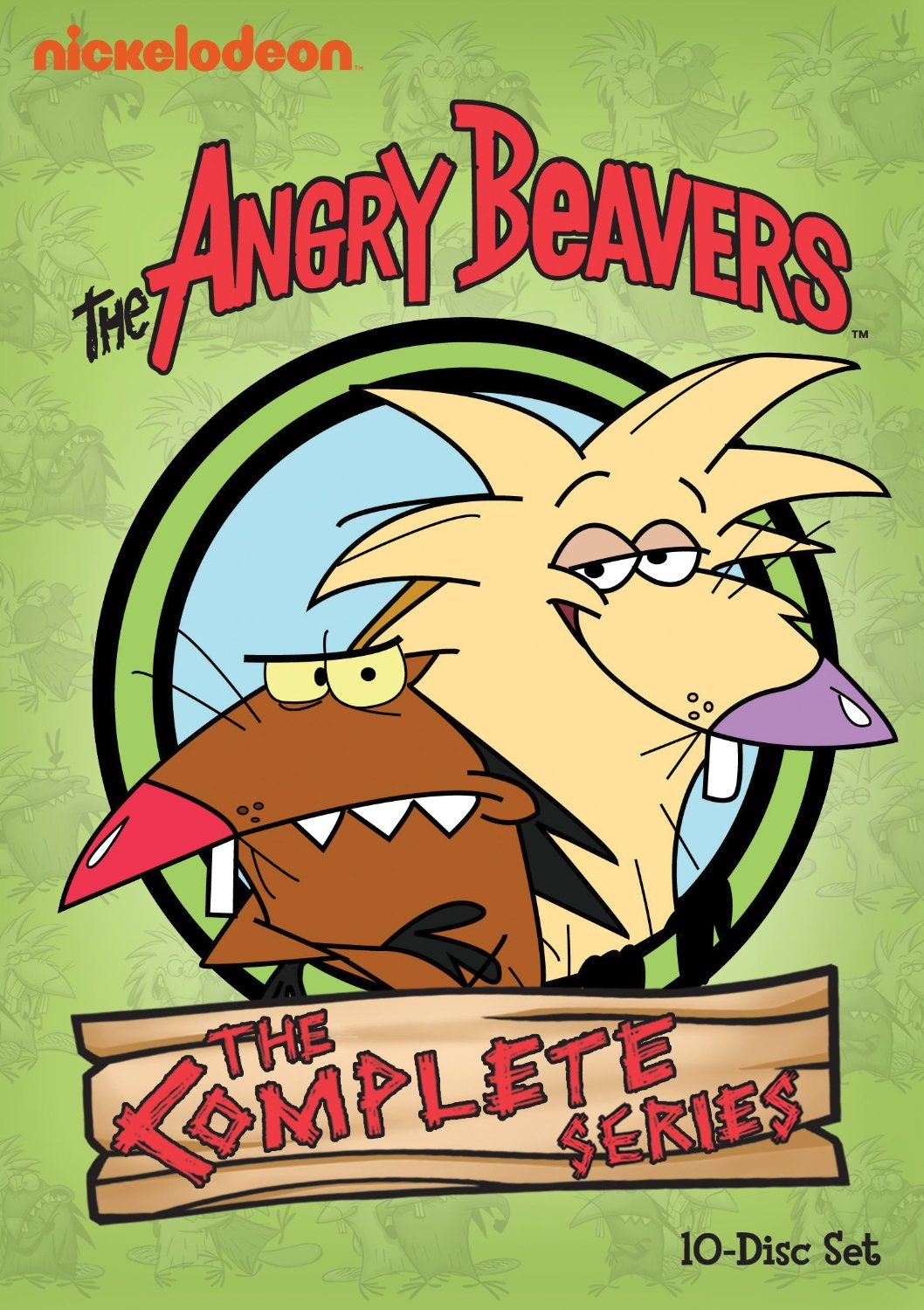My sons (ages 9 and 6) are becoming quite the little gamers in our house. I offer them a mix of board games, card games, and RPGs (well, RPG singular–Adventure Maximus), trying my best to reduce their digital device time when they can’t go outside in the 99+ degree heat in Atlanta. I’m always on the lookout for new games to introduce, especially cooperative games that support 3 or more players with easy rules to explain. Sometimes, however, my 9-year-old wants a good old fashioned 2-player game that offers some strategy and a single winner. While wandering the Exhibit Hall at Gen Con a few weeks ago, I picked up a card game called Star Realms (not quite new, but new to me) that I thought my oldest would enjoy. I wasn’t wrong.
Star Realms is and isn’t a CCG. Like a CCG, players build and enhance a deck that they will play against 2-4 other players. Unlike CCGs like Magic: The Gathering, where players with large wallets can customize their decks with rare and ultra-rare cards that most mere mortals cannot afford, Star Realms offers all its cards to players for purchase either through a basic Star Realms Core box (all the cards needed for 2 players), an expansion box called Star Realms: Colony Wars (additional cards to expand up to a 4-player game), and then regular expansions packs that offer identical cards inside.


I purchased the Core box, Colony Wars (so a few of my son’s friends could play with us), and some expansions. We’ve only opened the Core box at this point; I’m holding onto the expansions as my son learns the basic rules and begins to develop his own strategies. In a nutshell, here are the basics of gameplay:
1. Each player begins with 50 Authority; this is the basic life/health of the player. When it reaches 0, that player is out of the game.
2. Cards are purchased with Trade that is represented on the cards as a gold coin icon with a numeral. Damage is dealt to the opposite player’s Authority with the Combat icon (red target symbol with numeral).
3. There are four factions (red, green, blue, yellow) that represent different races and types of ships and bases that can be purchased and added to a player’s deck.
4. Players start with eight Scout cards (worth 1 Trade each) and two Viper cards (worth 1 Combat each) in their Decks. The first player draws three cards to start, and then players take turns drawing five cards from that point forward. Five faction cards are dealt face up in the Trade Row for players to buy with Trade, as well as a common pile of Explorer ship cards that cost 1 Trade but offer 2 Trade when played.
5. A purchased card from the Trade Row goes directly into the player’s Discard pile that is shuffled when all of that player’s cards are used up or when a player cannot draw a full five cards from his/her Deck. Some cards called Outposts can go immediately into play and stay in front of the player until destroyed; once destroyed (not Scrapped which removes a card permanently from the current game) it goes into the player’s Discard pile.
Cards purchased by players from Trade Row will offer Trade, Combat, or Authority values… or a combination of these. Many cards also offer special abilities such as forcing a player to discard a card from his hand (players draw up to five cards at the end of their turn, so forcing a player to discard during your turn reduces the number of cards they can play on their turn–no drawing back up to five until the END of the other player’s turn) or allowing players to Scrap a card from their deck (thus reducing the likelihood of a weak card showing up after the deck is shuffled). You can also scrap a card (with the garbage can icon) to trigger bonuses such as gaining 3 Trade for the Blob Wheel orbital in the below image.


Let me return to Outposts: outposts come in two varieties, black shield and silver shield. Black shield outposts protect players from damage until the shield value is matched or exceeded by the opposing player using Combat cards. Silver shield outposts can be bypassed by any damage inflicted by the attacking player, taking points directly off the target player’s Authority. (The downside to not destroying silver shield outposts is they often have big bonuses for the holding player such as some combination of Authority, Trade, or Combat, whereas Black shield orbitals seem to offer a single benefit.) Outposts tend to cost a little more than ships, too.
What I’m most enjoying about Star Realms is the variety of strategies that the game offers. Players can choose to buy and build up a damage dealing fleet, hoping to take down the opposing player’s Authority fast. Likewise, a player can buy up as many black shield outposts as possible, absorbing damage while whittling down the opponent’s Authority little by little. My son won a game by snapping up Authority-healing cards like crazy and buying a few key high-Combat value cards; he kept healing while busting through my black shield outposts and reducing my Authority a few points at a time. I countered by winning a game (fast) by buying up all the Explorers and using a couple of purchased cards that allowed me to discard the cheap Scout cards that only offered 1 Trade each. After five rounds, I was buying cards that dealt 7 and 8 damage along with a few forced discards, and those cards kept coming up in shuffles, allowing me to quickly punch through is black shield outposts. Yet another strategy involves stacking allied factions cards (they share a similar colored symbol in the upper-left corner) that give boosts when two or more allies are in play, doubling or even tripling damage or purchasing abilities.
And here’s the thing: we haven’t yet cracked the Colony Wars box or the expansion packs that offer additional cards with other special abilities. Even better, there’s a series of card expansions called Gambits that give players special abilities that can be used only once during the game. These cards can be given to inexperienced players to give them some help against a more experienced player or just used as special surprises to spring on opponents.



The expansion packs each contain 12 cards that offer additional surprises (based on the theme); the Bases & Battleships pack, for example, is great if you’re looking for an additional variety of outposts and new abilities. The Events pack allows you to toss in one or more events that trigger once they are revealed on Trade Row. The effect occurs immediately (sometimes benefiting only one player or hurting both) and then another card is drawn to replace it in Trade Row. The Heroes pack offers cards that go immediately into play with their own special abilities that can be triggered when needed. The Fleets & Fortresses pack offers a mix of additional ships and outposts that offer new, game-changing special abilities for their owners.
Releasing soon, by the way, is a similar Fantasy-styled game called Hero Realms. I played it at Gen Con and the gameplay is 90% identical to Star Realms but with a sword and sorcery theme. It finished a very successful Kickstarter and is close to delivering to backers. It wasn’t for sale at Gen Con, otherwise, I have a feeling I would have come home with that game, too.
As for Star Realms, here is one additional fact about the game: the Core box is only $15.00. I’ve easily gotten $15 worth of enjoyment and gameplay with my son, and we haven’t even broken into the expansion packs (around $4-8 each) and Colony Wars box (around $15) yet. Even better, for $4.99, you can get a digital version of the game as an app that supports solo and online multiplayer (asynchronous and live) and gives you access to the very same cards in the Core deck with in-app purchases of the various expansion decks running $2-4 each.
My oldest absolutely loves Star Realms (especially the card artwork). He’s been asking to play it every day after school, and while most games don’t take any longer than 15-20 minutes, he’s getting quite good at the game and we’ve had a few hit the 30-minute mark. (It’s been a good reward for after he completes his daily 30-minute reading requirement.) And now, after writing this up, I’m now quite anxious to open up one or two of the expansion packs… maybe even Colony Wars.
You can get more details on the official Star Realms site (including a FAQ, strategy notes, and Card Gallery among other resources).





Same experience in my house. My 10 year old and I were introduced to the game through a friend that is a huge tabletop gamer. It’s easy enough for kids to learn and start thinking about strategy and setup and game play can be relatively quick. We love it and are looking forward to getting some of the expansions soon.
Glad to hear it, John. Last night, my oldest tried a new tactic (didn’t work, but was cool to watch him try it) where he bought any card that forced me to discard while tossing up a single black shield orbital constantly. At one point, I had only two playable cards! Hard to deal damage to an opponent when you only have two cards to play and he has black shield! Long term, it didn’t work — once I knocked down his only orbital, he had two deals from his deck where the orbital didn’t make an appearance. Got lucky. I love how he’s trying different strategies.
Definitely check out the Colony Wars expansion because the multiplayer rules (which I really didn’t cover in this post) have some excellent variations for 3+ players.
Check the rule on Outposts; I don’t believe they go immediately into play.
I’ll check it again… that was the way that they were playing it at the GenCon demos. Could be that their demo staff had it wrong.
Okay, the rulesheet says that “Bases are not discarded at end of the turn. Instead they remain in play until they are destroyed or scrapped.”
As the demo team taught at Gen Con, when you buy an outpost it can be immediately placed in protection mode. Outposts special abilities were also allowed such as extra damage or buying power.
I guess this is one that Star Realms will have to address — I’ll submit the question to them and respond here if I get a solid answer.
I have the app for this game. Outposts go into the deck when bought, just like other cards.
If your family likes Deck Building games, I suggest checking out Dominion (the game that made the genre a thing) or my personal fav, Legendary.
Legendary is cooperative and pits Marvel super heroes against villians and is so much fun.
Tim, “into the deck” (as in shuffled into the current deck a player draws from) or into the Discard? Thanks for your response, and I’ll look at both of those. I’m familiar with Dominion but have avoided for a bit until my son got older. Maybe it’s time… thanks again!
I would say your son is ready. My 8 year old often beats me at Dominion and Splendor